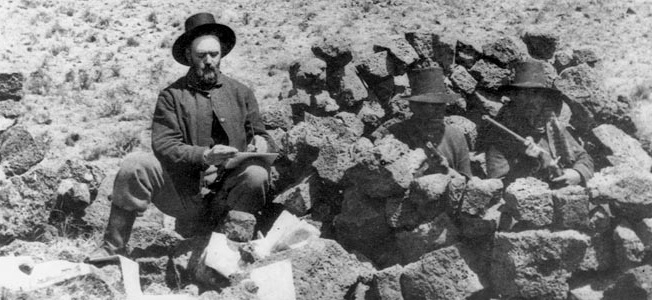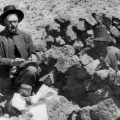( – promoted by navajo)
Following the 1873 Modoc War, the army had locked thirteen warriors in the cells in the guardhouse at Fort Klamath, a military post near the Klamath Reservation. Initially, the army intended to simply execute eight or ten of the leaders without a trial. The War Department, however, wanted no action taken until the Attorney General decided whether the captives were to be tried in civilian or military courts. The army commander replied:
“Delay will destroy the moral effect which their prompt execution would have upon other tribes.”
Six of the Modoc warriors-Captain Jack, Boston Charley, Black Jim, Schonchin John, Slolux, and Barncho-were tried in a military court martial for war crimes. The formal charges stressed that two peace commissioners had been killed during a suspension of hostilities. In justifying the charge of war crimes, the Attorney General stated:
“According to the laws of war there is nothing more sacred than a flag of truce dispatched in good faith, and there can be no greater act of perfidy and treachery than the assassination of its bearers after they have been acknowledged and received by those to whom they are sent.”

In order to try the defendants under military rather than civil law, the United States had to classify the conflict as a “war” and thus to define the Modoc as a sovereign nation as only sovereign nations can engage in war.
In 1907, the War Department officially enumerated 1,470 incidents of military action against American Indians between 1776 and 1907. According to the War Department, only two of these actions had the formal status of “war” under U.S. Army terminology: the 1877 Nez Perce War and the 1878 Bannock Indian War. The Modoc War, according to the War Department, was not, therefore a war.
The Modoc defendants were not represented by legal counsel and the government held them to a higher standard than its own soldiers. Any U.S. soldiers who violated the laws of war during the Modoc and other Indian wars were never tried and punished as war criminals. During the trial, Captain Jack and Schonchin John were shackled and chained together as were Boston Charley and Black Jim. The two younger defendants-Slolux and Barncho-were not shackled. Uniformed soldiers holding rifles with fixed bayonets stood guard in the court room.
The trial was carried out in accordance with the rules of a military court-martial. The judge advocate asked the defendants if they had any objection to any member of the military commission. It is likely that the Modoc defendants did not understand the significance of what was happening, for if they had understood, they almost certainly would have objected. There were ample grounds for challenging four of the five commission members for just cause, but the trial record shows that this was not explained to the defendants. Thus, the Modoc defendants raised no objection and the trial was allowed to continue. Four of the five members of the commission had been involved in the war and three had fought battles against the accused Modoc warriors.
With regard to the lack of legal counsel, the U.S. Army considered defense counsel a privilege, not a right. The prisoners, who had been confined to jail cells and shackled since their capture, were unable to find counsel.
Since the Modoc defendants spoke little English, Frank and Toby Riddle, the interpreters who had warned General Canby of the attack, translated the proceedings into Modoc. Frank Riddle also testified against them. It is doubtful that the interpreters understood the complex legal jargon of the trial and may not have translated these concepts.
As expected, the court found the six men guilty and sentenced them to be hung. President Ulysses Grant, however, commuted the sentences of Slolux and Barncho to life imprisonment at Alcatraz Island.
All of the Modoc prisoners, including the children of those to be hung, were forced to witness the executions. Their bodies were allowed to hang for 30 minutes following the execution. After the execution, the Modoc leaders’ heads were severed from their bodies and shipped to Washington, D.C. where they were examined by phrenologists who believed that criminal behavior was governed by cranial characteristics.

Leave a Reply